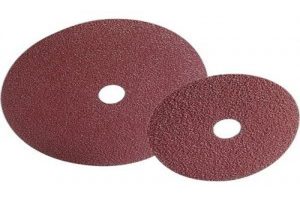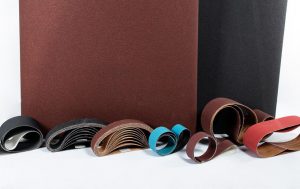Home / News & Blog / Analysis of the Characteristics and Applications of Coated Abrasives
Coated abrasives are tools that can be ground and polished by bonding the abrasive to a flexible substrate (such as cloth, paper, or polyester film) with a binder, also known as flexible abrasives in the industry. It comes in a wide variety of types, including sandpaper, abrasive cloth, abrasive belts, etc. It is an indispensable and important tool in a variety of industrial fields, with a series of significant characteristics and a wide range of applications. The following is a detailed analysis of its characteristics and application area.


1. Variety of substrate options: Coated abrasives can be made from a variety of substrates, such as paper, cloth, polyester film, and so on. Different substrates have different flexibility, abrasion resistance, and tear resistance, suitable for different grinding needs.
2. Strong flexibility: Coated abrasives use a flexible substrate (e.g. cloth, paper, etc.) as a carrier, and are therefore extremely flexible. This allows coated abrasives to be processed into different shapes by folding, bending, coiling, etc. to meet the processing needs of various complex workpieces.
3. High grinding efficiency: The abrasives of coated abrasives are uniformly distributed on the substrate through advanced processes such as electrostatic sanding, and the micro-edges of the abrasives are sharp and arranged in an orderly manner, making the grinding process highly efficient. Moreover, the surface texture after grinding is uniform, which improves the processing quality.
4. The abrasive particles are evenly distributed: The abrasive particles are uniformly distributed on the surface of the substrate by means of a binder, which makes the grinding process more homogeneous and stable and enables fine surface finishes to be achieved.
5. Variety of specifications: Coated abrasives can be made into various shapes and specifications, such as abrasive belts, abrasive paper, abrasive cloth rolls, etc., to adapt to different processing needs.
6. Relatively low cost: Compared with other types of abrasives, coated abrasives are relatively inexpensive to manufacture, safe to use, and easy to operate.
1. Metalworking: Coated abrasives play an important role in the grinding, polishing, and sanding of metal materials. It is mainly used for surface grinding, deburring, descaling, and polishing of metal materials such as steel, stainless steel, aluminum, copper, etc., as well as rough grinding, fine grinding and lapping of metal workpieces to achieve the required size and surface finish.
2. Optical processing: In the field of optical processing, coated abrasives are widely used in the processing of glass lenses, prisms and other optical components. Their high processing accuracy and surface smoothness can meet the processing requirements of high-quality optical components.
3. Aerospace: The aerospace sector demands the highest level of precision and performance from its components. Coated abrasives play an important role in the manufacture of aerospace engine blades, precision bearings and other components, and can provide precision surface treatment of aircraft components to ensure surface finish and dimensional accuracy.
4. Shipbuilding and Automobile Manufacturing: In the process of shipbuilding and automobile manufacturing, coated abrasives are used for grinding, polishing, and sanding of hull steel plates, automobile parts and so on.
5. Metallurgy and Railway Transport
1) Metallurgical equipment maintenance: In the metallurgical industry, coated abrasives are used in the maintenance and repair of metallurgical equipment. Their powerful grinding ability can quickly remove the rust and wear layer on the surface of the equipment and restore the performance and precision of the equipment.
2) Railway equipment manufacturing: In the manufacture of railway equipment, coated abrasives are used in the processing and maintenance of wheels, rails, and other key components. Their high machining accuracy and wear resistance can meet the safety and reliability requirements of rail transit equipment.
6. Processing of non-metallic materials: In addition to metal materials, coated abrasives are also suitable for processing non-metallic materials such as wood, ceramics, plastics, leather, rubber and paint putty. Its diversified shapes and customized features enable coated abrasives to meet different materials and processing needs.
In conclusion, coated abrasives have important applications in many fields such as machinery manufacturing, optical processing, electronic parts manufacturing and so on.